If you’re going to be your own bike mechanic, the proper tools can be the difference between getting your bike perfectly dialed and dragging it to a shop in search of rescue.
Few cyclists can buy a comprehensive tool set-up from the get-go though. Tools are often purchased individually until one day you have an adequate collection. It took me years to amass the all tools on my bench, and yet I still regularly realize I’m missing something I need for a unique repair or unexpected task.
Fortunately, I have access (sometimes) to the decked-out tool benches used by our professional bike technicians. Bike technicians are the backbone of The Pro’s Closet and they spend each day inspecting, servicing, and repairing dozens of bikes. They live and die by their tools.
Curious about how I could improve my own tool collection, I asked our technicians what basic but essential tools they recommend for the home mechanic. These 10 tools are all relatively inexpensive, easily attainable, and will improve the experience of wrenching on your own bike.
1. Magnetic dishes and mats
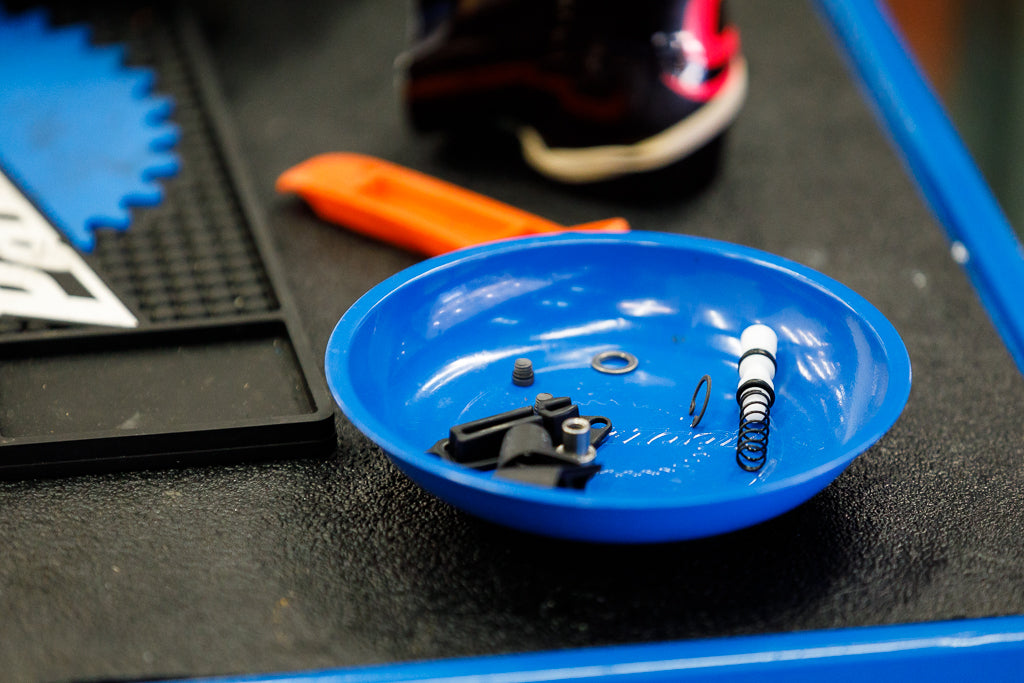 One of the most frustrating things is losing an important bolt or screw because it’s rolled away into some dark corner, never to be seen again. To keep hardware and other bits safely corraled, we use magnetic dishes and magnetic mats. Even for non-magnetic objects, they’re great because they provide a consistent, easily visible spot to keep small objects contained so they don't get lost.
One of the most frustrating things is losing an important bolt or screw because it’s rolled away into some dark corner, never to be seen again. To keep hardware and other bits safely corraled, we use magnetic dishes and magnetic mats. Even for non-magnetic objects, they’re great because they provide a consistent, easily visible spot to keep small objects contained so they don't get lost.
2. Dry-erase board / Chalkboard
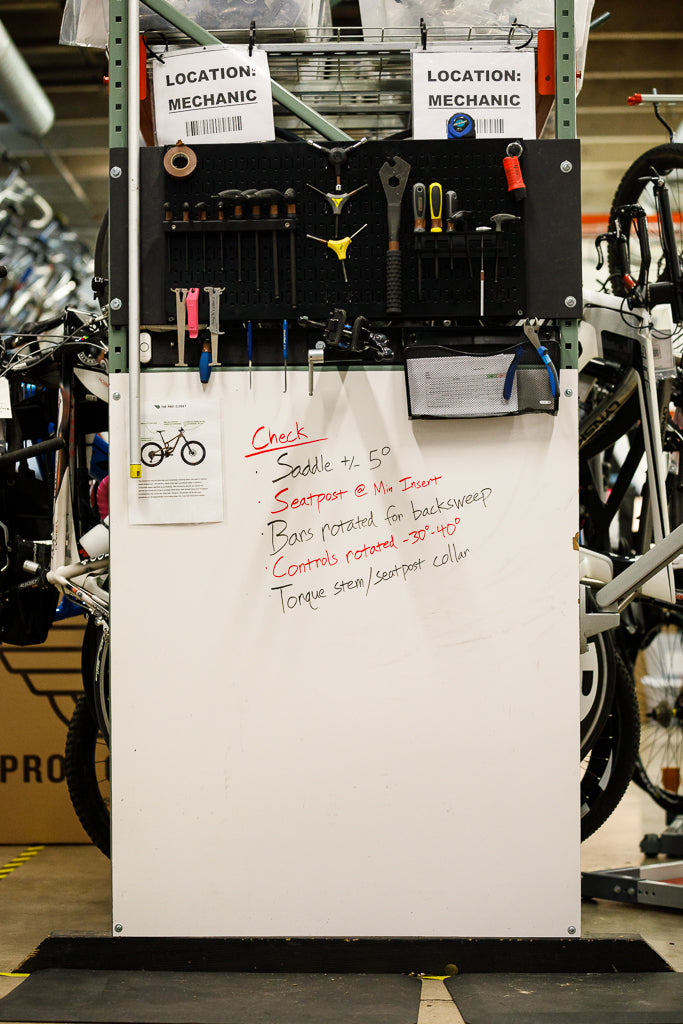 Our technicians are often faced with a long list of tasks. To keep their heads on straight, they rely on large and conveniently placed dry-erase boards to write instructions, checklists, and reminders. These are great if you’re prepping your bike for a big event, trip, or race and don’t want to forget anything. As a bonus, our dry-erase boards allow us to attach magnets to pin papers and notes up and even attach our magnetic dishes to use as convenient bolt and tool holders.
Our technicians are often faced with a long list of tasks. To keep their heads on straight, they rely on large and conveniently placed dry-erase boards to write instructions, checklists, and reminders. These are great if you’re prepping your bike for a big event, trip, or race and don’t want to forget anything. As a bonus, our dry-erase boards allow us to attach magnets to pin papers and notes up and even attach our magnetic dishes to use as convenient bolt and tool holders.
3. Utility picks
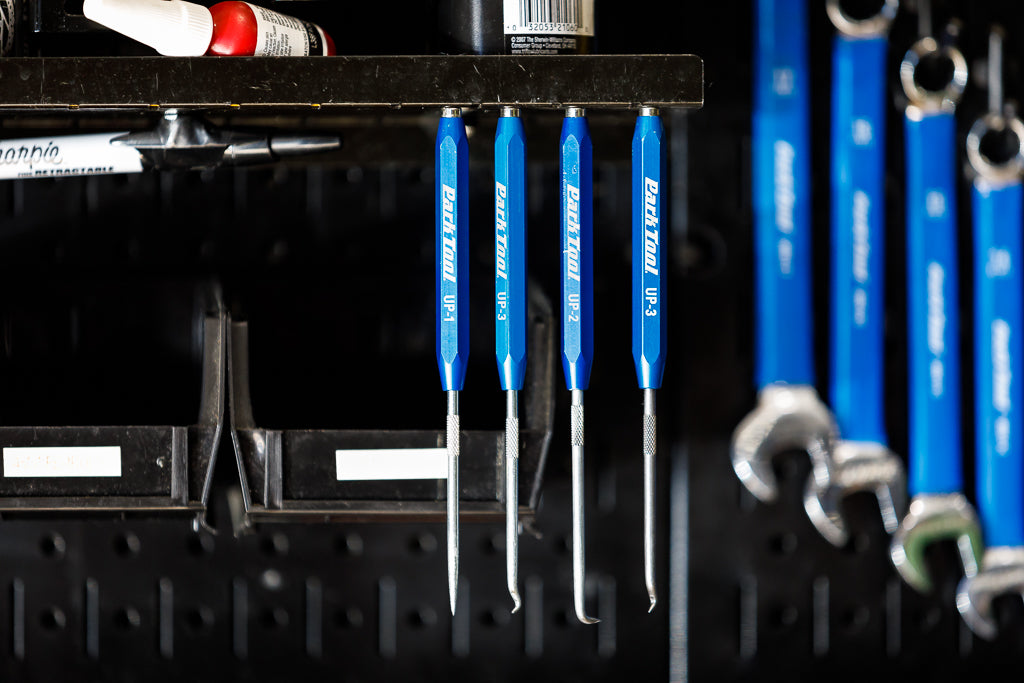 Utility picks are great for a wide variety of detail work on small and delicate surfaces. We use them clean hard-to-reach areas on the bike and for tasks like opening sheaths in freshly cut cable housing, removing seals and retaining rings, and fishing out objects from tight spaces. These Park Tool picks also have a handy magnet on the end for easy storage and for snagging things like bolts, cables, and ball bearings.
Utility picks are great for a wide variety of detail work on small and delicate surfaces. We use them clean hard-to-reach areas on the bike and for tasks like opening sheaths in freshly cut cable housing, removing seals and retaining rings, and fishing out objects from tight spaces. These Park Tool picks also have a handy magnet on the end for easy storage and for snagging things like bolts, cables, and ball bearings.
4. Valve core remover / tire sealant injector
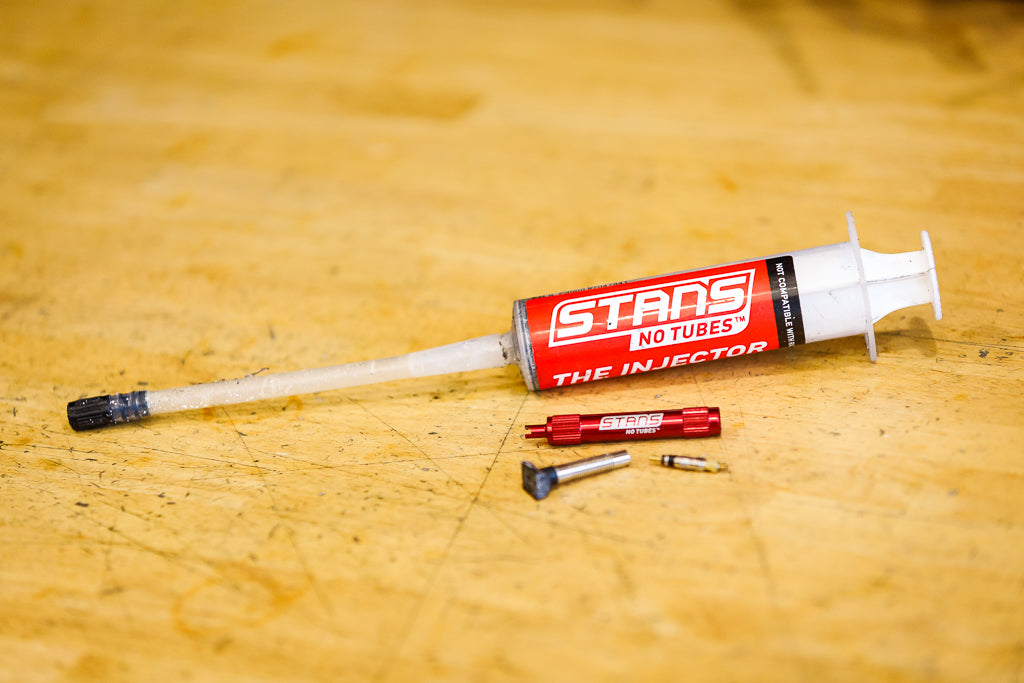 Tubeless tires are the standard for mountain and gravel bikes, and they are quickly becoming more common on the road too. Valve core removers allow you to remove the core from Presta valves so you don’t have to unseat the tire bead to refresh tubeless sealant. The addition of a reusable sealant injector makes it easy for any home mechanic to keep their tire sealant topped off. Valve core removers also let you disassemble and clean your valves if they are clogged.
Tubeless tires are the standard for mountain and gravel bikes, and they are quickly becoming more common on the road too. Valve core removers allow you to remove the core from Presta valves so you don’t have to unseat the tire bead to refresh tubeless sealant. The addition of a reusable sealant injector makes it easy for any home mechanic to keep their tire sealant topped off. Valve core removers also let you disassemble and clean your valves if they are clogged.
5. Rotor truing fork / Brake pad spreader
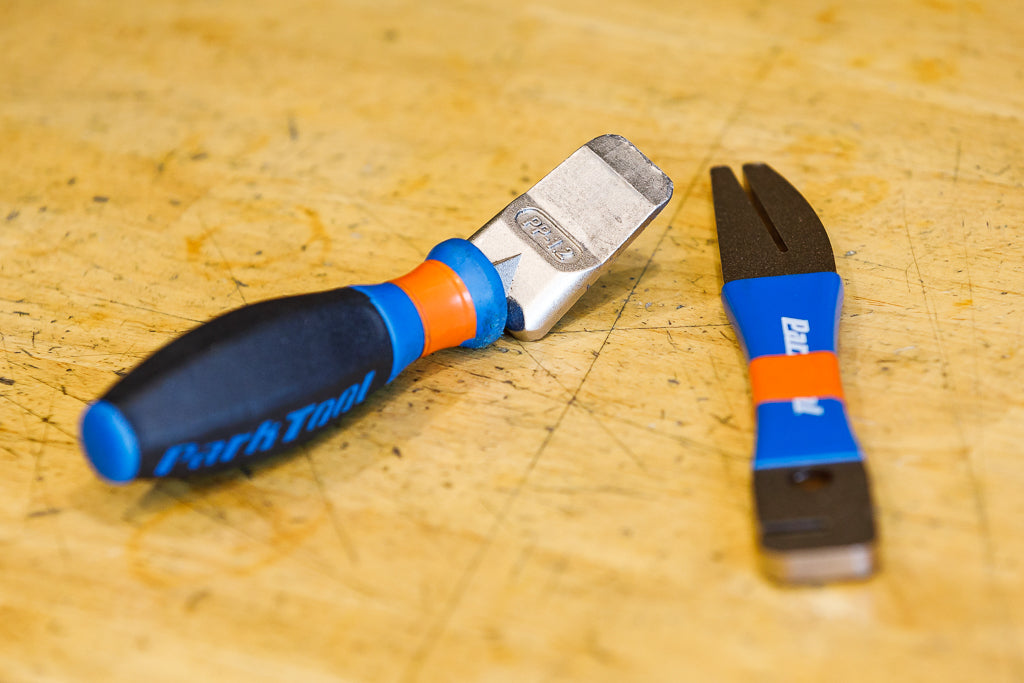 Disc brake tolerances are tight, and if you ride often you’ll eventually notice the dreaded squeals and scraping sounds of brake rub. If recentering your calipers doesn’t work, it’s time to use a truing fork to straighten your disc brake rotors. An adjustable crescent wrench can work in a pinch, but a dedicated truing fork is more precise and reduces the chances of contaminating your rotors. A brake pad spreader allows you to easily push pistons back in to ensure they are even and that your pads are advanced the proper amount for perfect function.
Disc brake tolerances are tight, and if you ride often you’ll eventually notice the dreaded squeals and scraping sounds of brake rub. If recentering your calipers doesn’t work, it’s time to use a truing fork to straighten your disc brake rotors. An adjustable crescent wrench can work in a pinch, but a dedicated truing fork is more precise and reduces the chances of contaminating your rotors. A brake pad spreader allows you to easily push pistons back in to ensure they are even and that your pads are advanced the proper amount for perfect function.
6. Bead jack
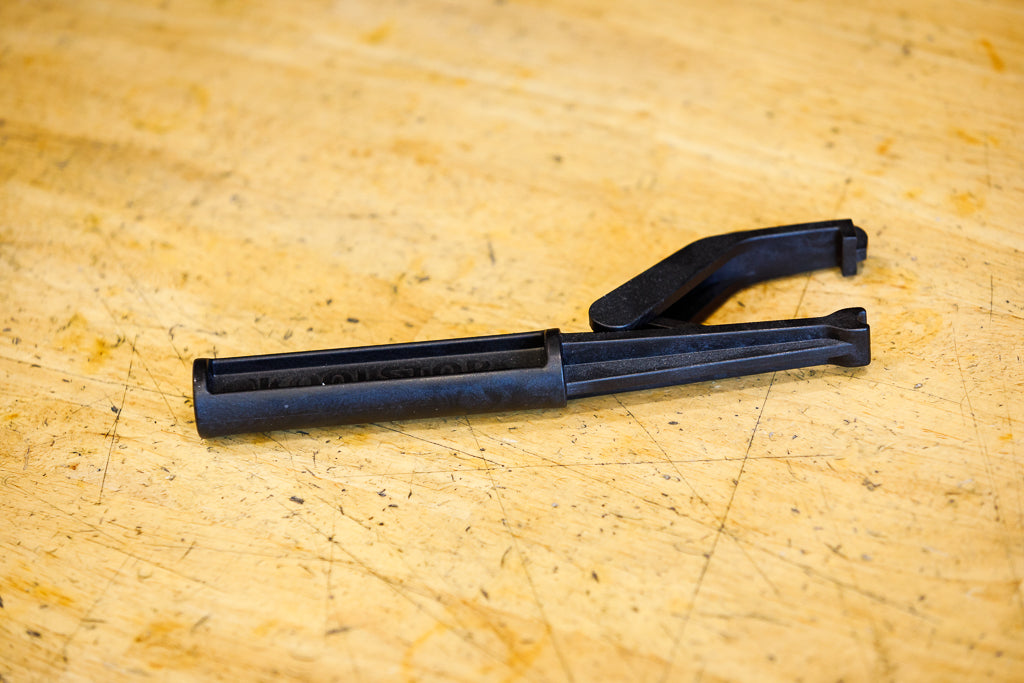 Many home bike mechanics have struggled with a stubborn wheel and tire combo that is so tight, it feels near impossible to pull the tire bead over the rim lip. Before you start breaking tire levers and skinning your knuckles, you can try using a bead jack to give you more mechanical advantage. It is inexpensive, easy to use, and can save your hands. Unfortunately, we’ve yet to find one large enough for wider mountain bike tires, but for tough road and gravel tires, the bead jack is indispensable.
Many home bike mechanics have struggled with a stubborn wheel and tire combo that is so tight, it feels near impossible to pull the tire bead over the rim lip. Before you start breaking tire levers and skinning your knuckles, you can try using a bead jack to give you more mechanical advantage. It is inexpensive, easy to use, and can save your hands. Unfortunately, we’ve yet to find one large enough for wider mountain bike tires, but for tough road and gravel tires, the bead jack is indispensable.
7. Flush cutters
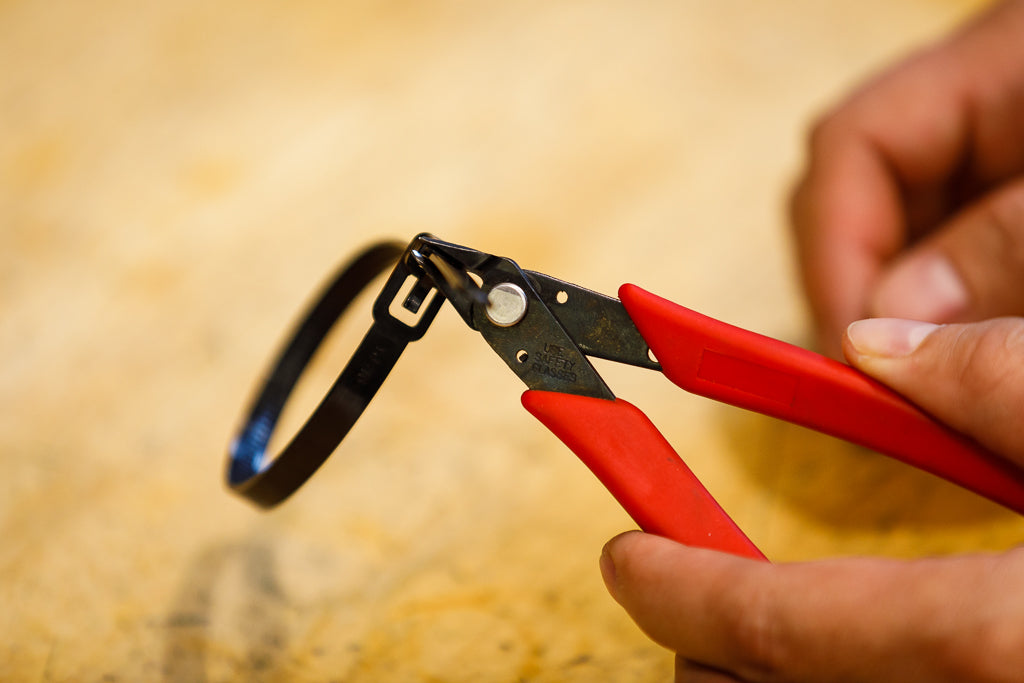 This is one for detail-oriented bike mechanics. Flush cutters differ from normal wire cutters because the blades are beveled to produce a smooth, flat, and neat cut. The main use on a bicycle is for cutting zip ties so that the ends sit perfectly flush against the pawl head with no excess. Any rider who has accidentally sliced an arm or a leg on the sharp edge of a zip tie will appreciate a proper flush cut.
This is one for detail-oriented bike mechanics. Flush cutters differ from normal wire cutters because the blades are beveled to produce a smooth, flat, and neat cut. The main use on a bicycle is for cutting zip ties so that the ends sit perfectly flush against the pawl head with no excess. Any rider who has accidentally sliced an arm or a leg on the sharp edge of a zip tie will appreciate a proper flush cut.
8. Master link pliers
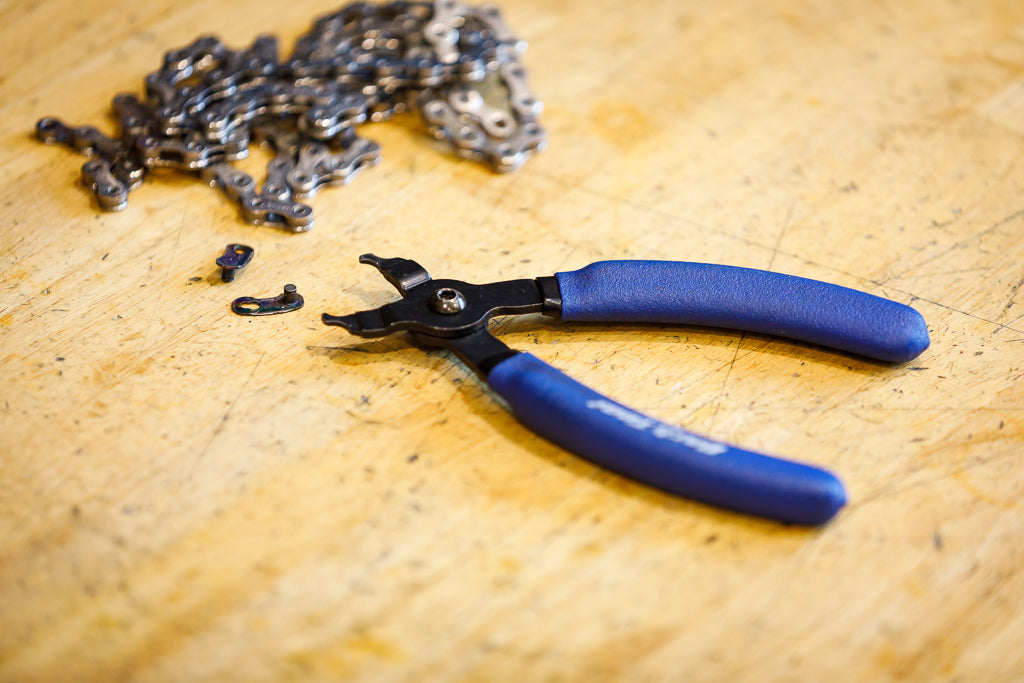 Master links make it easy to install and remove chains. Those with strong fingers may be able to undo a master link without a tool, but master link pliers make the job significantly easier. They also help undo master links without damaging them so they can be reused. (Note: Some manufacturers may recommend against reusing their master links after removal.) This is especially useful for tasks like deep cleaning, applying special lubes, and adding or removing chain links to accommodate different gearing.
Master links make it easy to install and remove chains. Those with strong fingers may be able to undo a master link without a tool, but master link pliers make the job significantly easier. They also help undo master links without damaging them so they can be reused. (Note: Some manufacturers may recommend against reusing their master links after removal.) This is especially useful for tasks like deep cleaning, applying special lubes, and adding or removing chain links to accommodate different gearing.
9. Mechanic Grip gloves
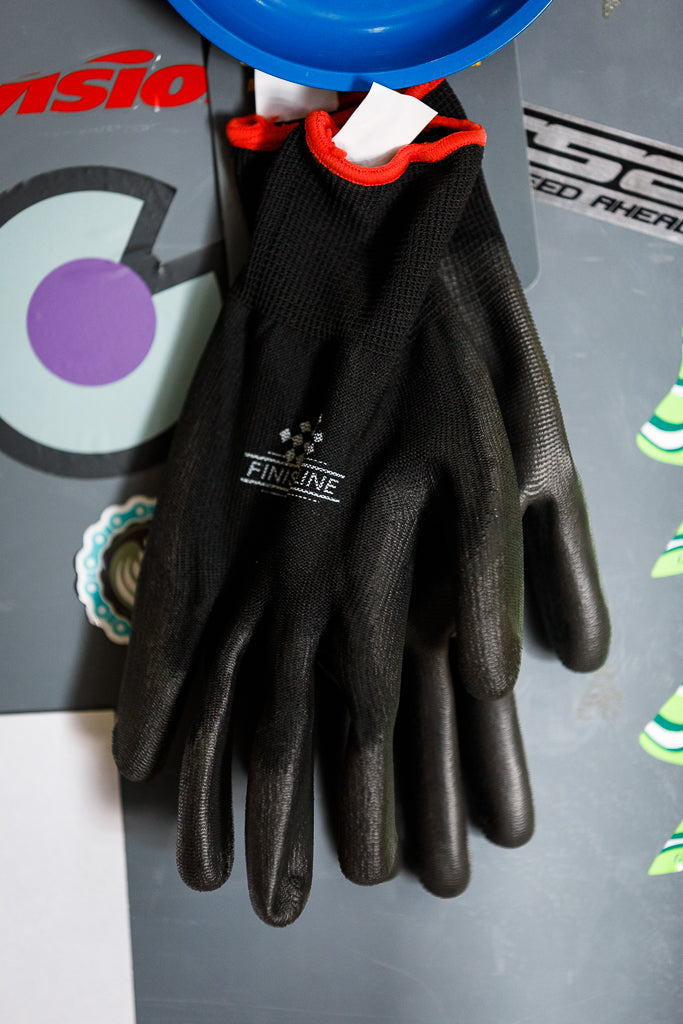 Gloves keep grease, grime, oils, and other nasty chemicals off your skin. Disposable latex or nitrile gloves are good options, but our technicians like to use more durable and reusable Mechanic Grip gloves. They provide more protection for your hands than a disposable glove, and the polyurethane coating on the palm seals out contaminants while providing increased grip for working on small parts. One pair is inexpensive and will last for several weeks of daily bike wrenching making them better for your wallet and the environment.
Gloves keep grease, grime, oils, and other nasty chemicals off your skin. Disposable latex or nitrile gloves are good options, but our technicians like to use more durable and reusable Mechanic Grip gloves. They provide more protection for your hands than a disposable glove, and the polyurethane coating on the palm seals out contaminants while providing increased grip for working on small parts. One pair is inexpensive and will last for several weeks of daily bike wrenching making them better for your wallet and the environment.
10. Torque Driver
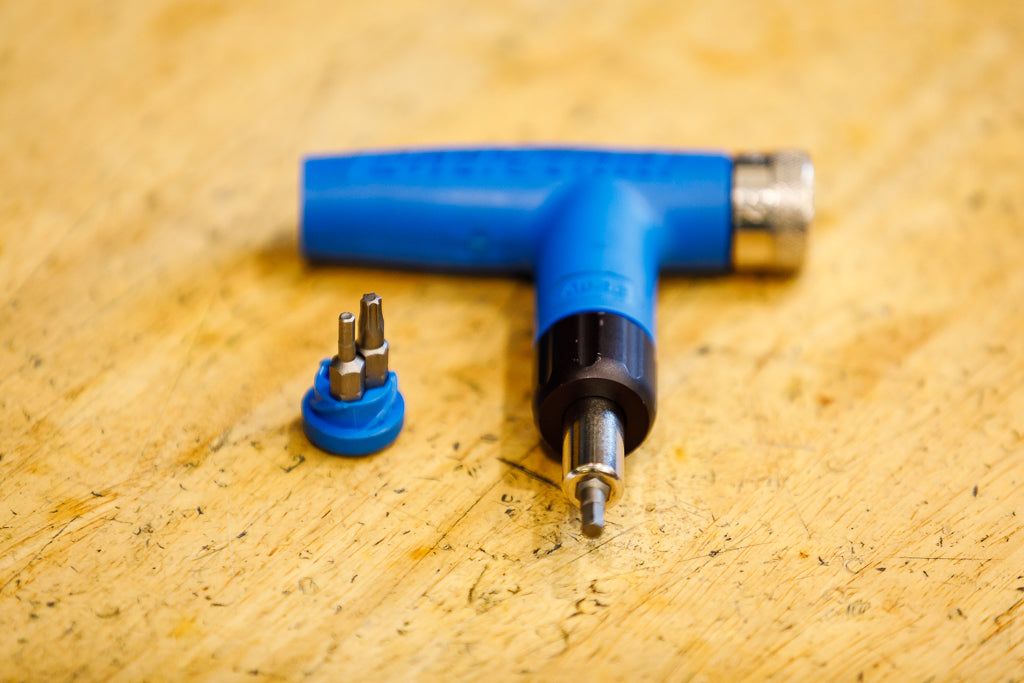 Ask any experienced mechanic about the most important tool to have in your arsenal and the torque wrench is likely at the top of many people’s lists. Tightening bolts to the proper torque spec is key to ensuring your bike functions reliably and safely. A large, expensive torque wrench isn’t necessary for most home mechanics. For tasks like tightening stems, seatpost clamps, and other small bolts, a simple and affordable T-handle torque driver will provide the necessary bits and torque range to handle almost everything.
Ask any experienced mechanic about the most important tool to have in your arsenal and the torque wrench is likely at the top of many people’s lists. Tightening bolts to the proper torque spec is key to ensuring your bike functions reliably and safely. A large, expensive torque wrench isn’t necessary for most home mechanics. For tasks like tightening stems, seatpost clamps, and other small bolts, a simple and affordable T-handle torque driver will provide the necessary bits and torque range to handle almost everything.
Do you use any of these tools? What other bike tools do you think are indispensable? Let us know in the comments!























